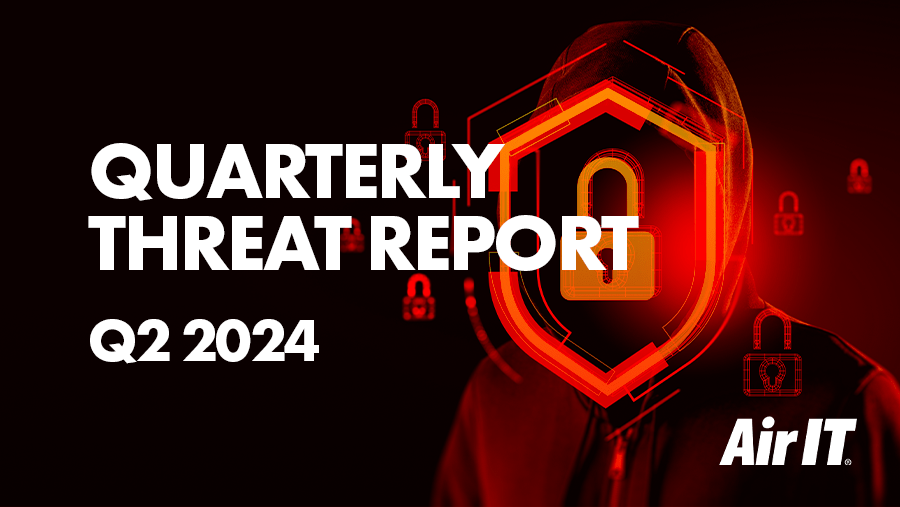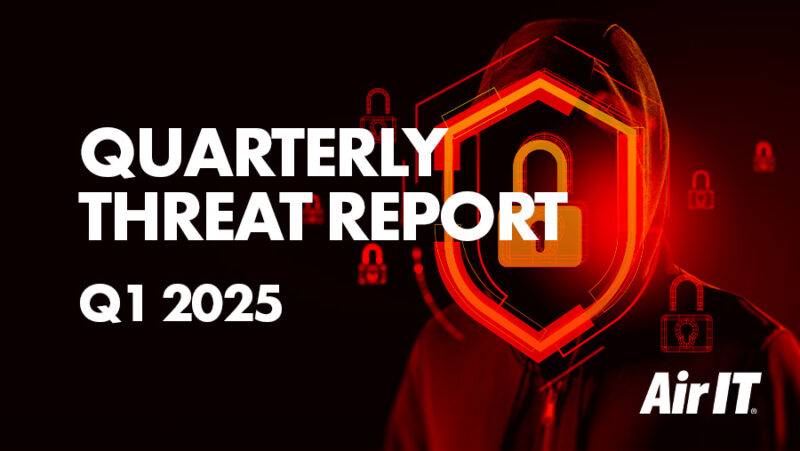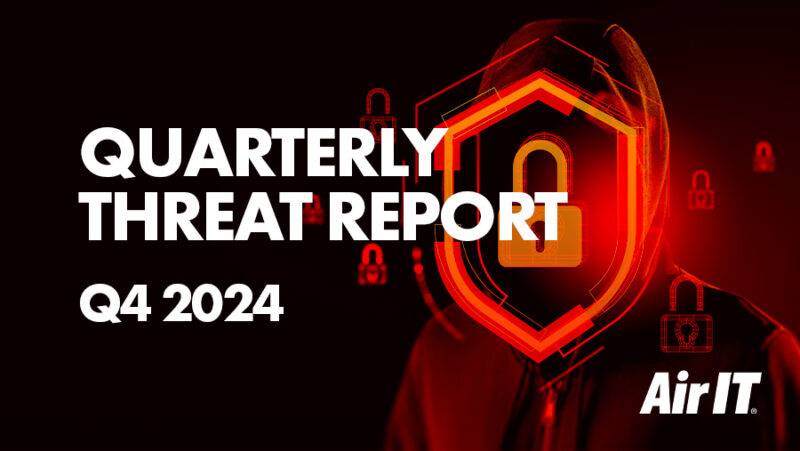As we dive into the second quarter of 2024, the cybercrime landscape continues to evolve at an alarming pace. The following threat report includes a detailed round-up of the evolving cyber security landscape, including key updates we've seen in Q2 2024 so far.

How can it be the third quarter of 2024 already? As time flies, the cyber security landscape continues to evolve rapidly. In 2023, the average cost of the most disruptive breach was approximately £1,205 for businesses and £460 for charities, highlighting the significant financial impact of cyber threats on organisations, regardless of their size or sector.
From zero-day vulnerabilities to AI-powered attacks, let’s dissect the challenges organisations face in safeguarding their digital assets as we look at the Q2 Threat Report.
Q2 Threat Report:
Following the high levels of cybercrime in the first quarter of 2024, the second quarter continued to experience significant threats. Below are the key threats that dominated the second quarter of 2024:
- Zero-day vulnerabilities: Zero-day vulnerabilities are increasingly common and refer to unpatched security flaws exploited by attackers before a fix is released, potentially leading to data breaches and system compromise.
- Ransomware: Ransomware attacks continue to be a major threat. Cybercriminals encrypt important data and demand ransom payments for decryption, leading to financial losses and operational disruptions.
- Cloud computing risks: With the widespread adoption of cloud services, security risks related to misconfigurations, data exposure, and unauthorised access are growing. Organisations must secure their cloud environments effectively.
- AI-generated phishing: Cyber criminals use AI to craft convincing phishing emails. These messages mimic legitimate communication, making it harder for users to differentiate between real and fake requests.
- Decoding 5G risks: New vulnerabilities are emerging as 5G networks expand. Threats include network slicing attacks, IoT device vulnerabilities, and potential disruptions to critical infrastructure.
- Supply chain attacks: Cyber criminals are targeting supply chains to compromise software updates, hardware components, or third-party effects.
- Insider threats: Malicious or negligent insiders pose a risk to organisations. Monitoring user behaviour and implementing access controls are essential to mitigate insider threats.
- Phishing for vulnerabilities: Phishing remains the most common type of attack. Cyber criminals use social engineering tactics to trick users into revealing sensitive information or downloading malicious content.
- Insufficient IoT security: The Internet of Things (IoT) continues to expand, but many IoT devices lack robust security features and insecure devices can be exploited for botnets (a group of Internet-connected devices infected with malicious software) surveillance, or data theft.
What’s in the news:
The cyber world has seen some interesting headlines over the past quarter, here are some of the most talked-about stories.
- NCSC ramps up support for those at high risk of cyber-attacks: The UK’s National Cyber Security Centre (NCSC) is intensifying efforts to assist individuals and organisations vulnerable to cyber threats. This includes tailored guidance and proactive measures to enhance security.
- London hospitals cyber-attack sees over 1,000 NHS ops postponed: A cyber-attack targeted London hospitals, disrupting critical services. More than 1,000 NHS operations were postponed due to the breach.
- Microsoft AI feature investigated by UK watchdog over screenshots: The UK’s data protection regulator is examining a new Microsoft AI feature related to capturing screenshots due to privacy concerns.
- Nearly 10 billion passwords exposed in possibly the biggest leak: A massive data breach exposed approximately 10 billion passwords, highlighting the importance of robust password management and security practices.
- UK businesses face new cyber-attacks every 44 seconds in Q2: Cybercriminals are targeting UK businesses relentlessly. On average, a new attack occurs every 44 seconds, emphasising the need for robust defences.
- Small businesses are three times more likely to be targeted by cybercrime than large companies: You might not think it, but small businesses are at a higher risk of cyber threats compared to larger enterprises, making them disproportionately vulnerable to attacks.
- Exclusive London club targeted in whaling attack: A sophisticated “whaling” attack has targeted an exclusive club in London. Whaling attacks focus on high-profile individuals or organizations, aiming for maximum impact.
- Ticketmaster hack: Ticketmaster, a major ticketing platform, suffered a breach between April and May. Ticketmaster customers have been advised to enrol in a security service to mitigate risks.
- Twilio’s Authy app breach exposes millions of phone numbers: In July, the Authy app, used for two-factor authentication, experienced a breach causing millions of phone numbers to be exposed. Users are urged to update their apps and remain vigilant against phishing attempts.
Key takeaways
Protecting your business from these threats is crucial for maintaining security and preventing potential damage. Here are some key takeaways to consider:
- Regularly apply security patches to address vulnerabilities promptly.
- Strengthen your cloud services with robust security measures, such as encryption and access controls, to safeguard important data from unauthorised access.
- Use endpoint protection tools to detect and prevent ransomware attacks.
- Implement robust backup and disaster recovery solutions.
- Educate your employees on cyber security best practices to mitigate insider threats and enhance overall organizational security. In 2023, only 27% of businesses and 20% of charities provided cybersecurity training to their staff.
- Make sure your organisation is equipped with the necessary skills to identify phishing attempts. This will help your staff avoid clicking on suspicious links or giving away personal information unknowingly.
- Be prepared for phishing compromises. Allocate resources to improve your cyber capabilities for detecting and responding to phishing attempts.
- Use email spam filtering solutions, like Mimecast, to detect suspicious messages.
- Assess 5G network risks and implement security measures.
Don’t be the next victim
We offer a free IT audit that can assist you in building a strong foundation for your future growth and success. Our audit is designed to pinpoint any vulnerabilities or weaknesses in your infrastructure and to guarantee that you have the most up-to-date anti-virus and threat management tools and updates in place.
Discover more strategies to improve your cyber security in our blog post titled ‘Strengthening Your IT Resilience in 2024 & Beyond’ Alternatively, feel free to contact us for further assistance in enhancing your security posture through cyber resilience.




